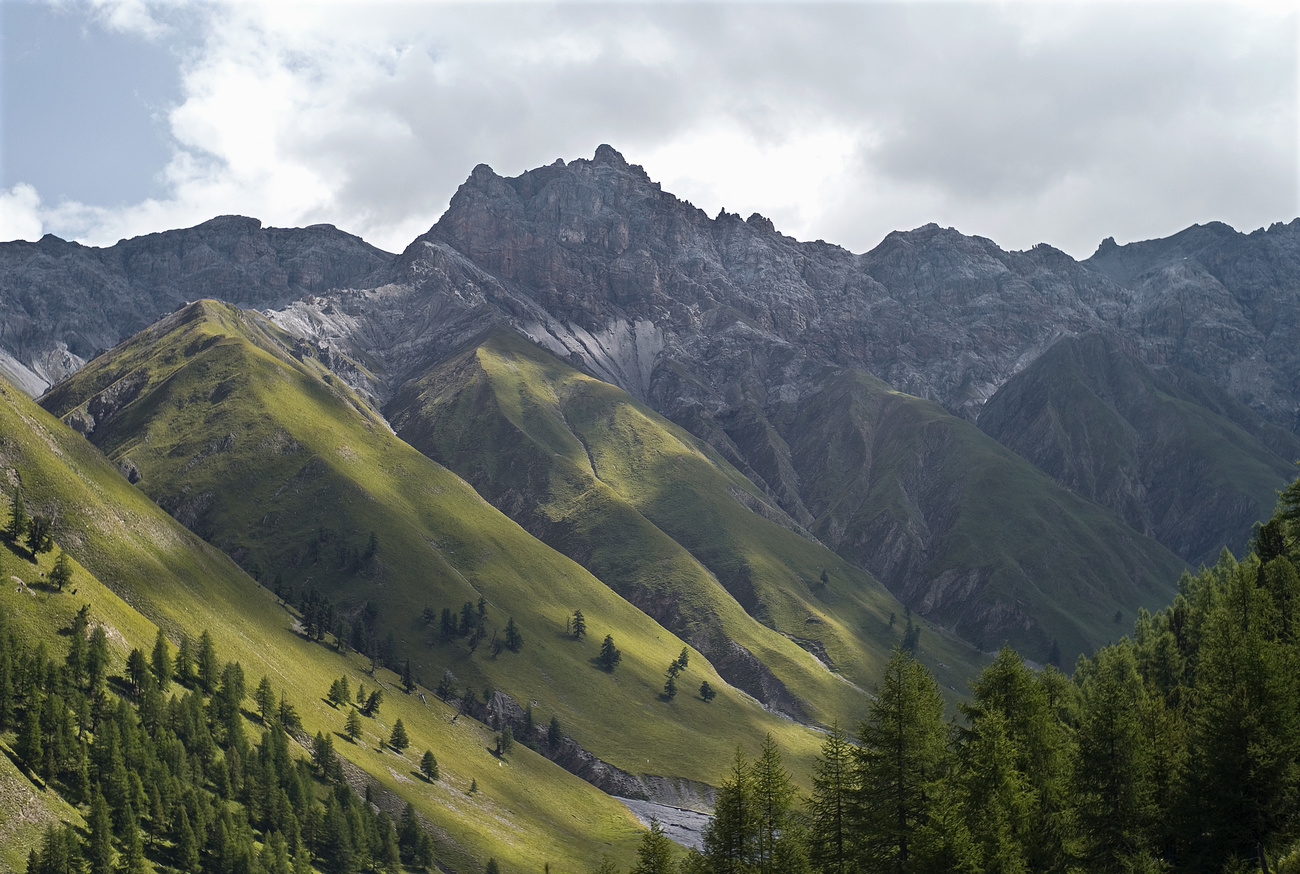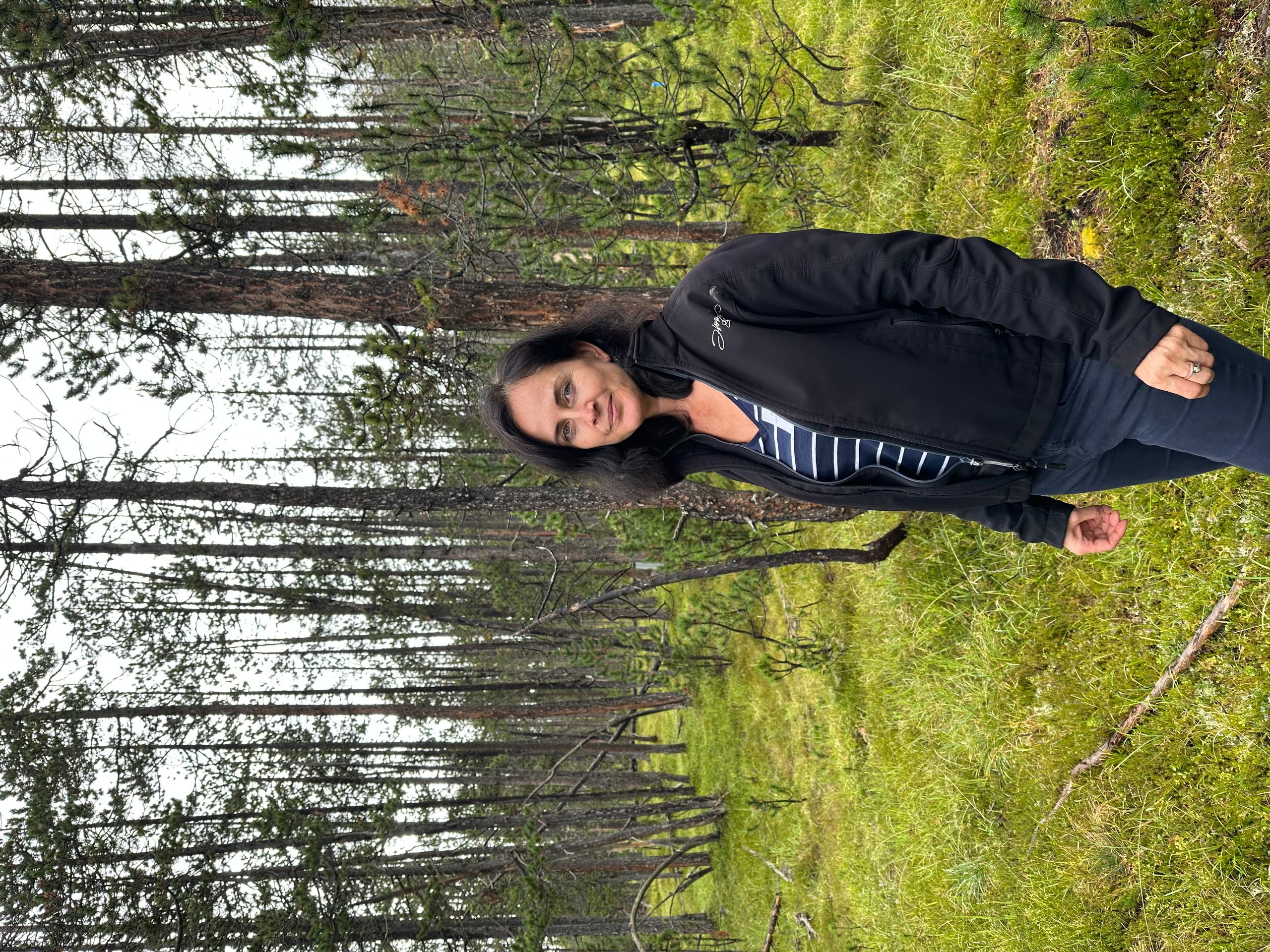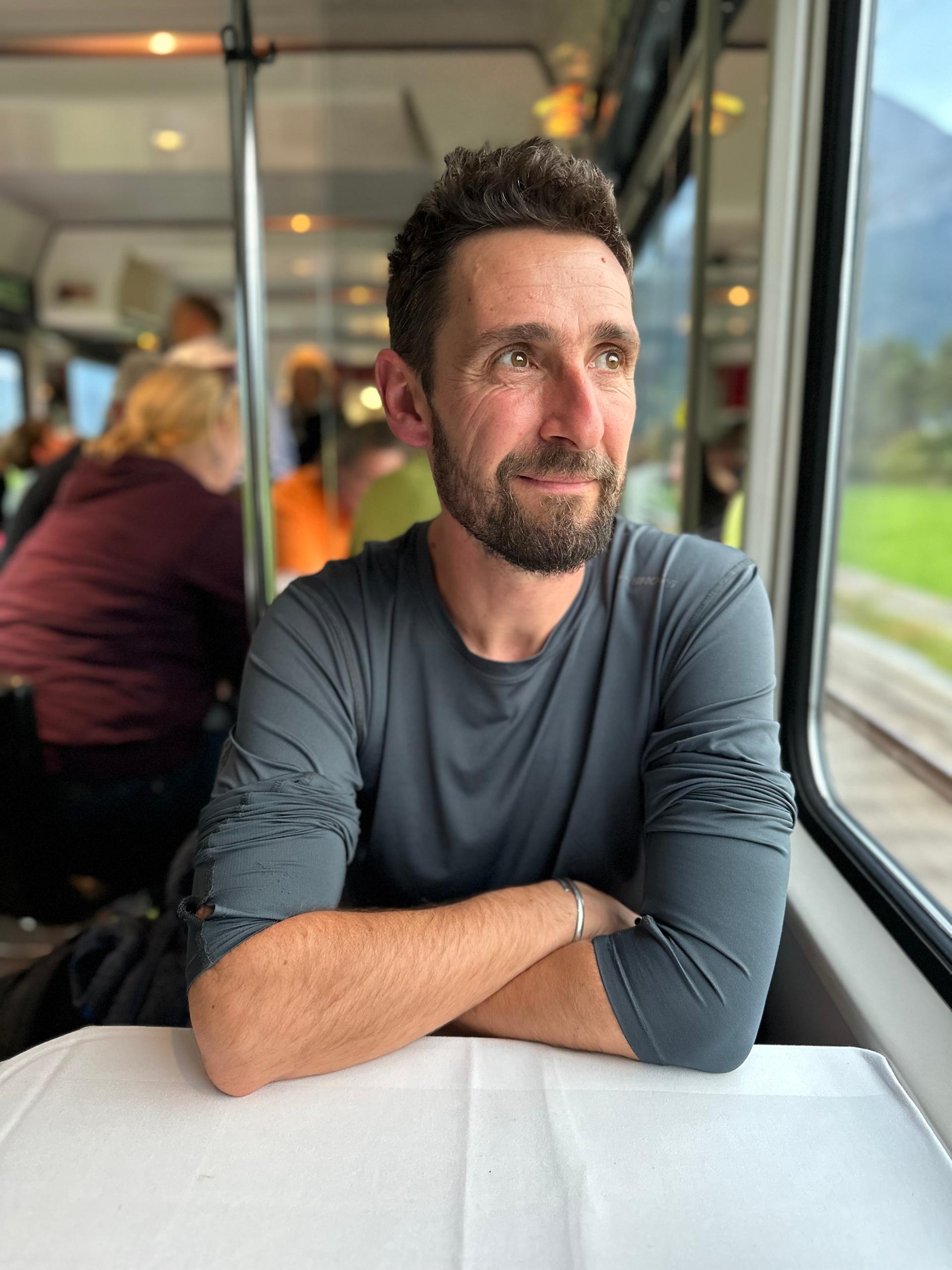
How nature parks are becoming an oasis of Swiss-EU cooperation

A delegation from Central and Eastern European countries is seeking inspiration for their own nature reserves inside the Swiss National Park. Their trip is made possible by Switzerland’s contribution to the European Union (EU) Cohesion Fund which, after a long tug-of-war, is now being implemented.
The group hikes upwards, following the trail carefully – leaving it is strictly forbidden in the Swiss National Park. None of these people need to be reminded of that. They are all park professionals. The delegation, comprising participants from Bulgaria, Estonia, Slovakia and the Czech Republic, were invited to spend several days in Switzerland in September, and the excursion to the national park in the Alps in eastern Switzerland was a key item on the agenda.
How can sustainable tourism and protecting biodiversity in nature reserves be promoted and, where necessary, combined? This question arises in a lot of places. The Swiss National Park can give some pointers. Founded in 1914, it is the oldest of its kind in the Alps and in Central Europe. It has remained an untouched reserve with maximum protection regulations for a century, and it is an important research site.
The economics ministry invited the delegation because, after a long tug-of-war with the European Commission, Switzerland has concluded agreements with various Central and Eastern European states within the framework of its so-called cohesion contribution. Switzerland pays this contribution to the EU as a kind of compensation for access to the European single market. A little more than CHF1 billion ($1.1 billion) is earmarked for the Eastern states. As well as social security and economic growth, environmental protection is a strategic goal that Switzerland is pursuing with these payments (see box below).
A park like no other
The conversations between participants at the national park intensify with each metre of altitude.
“This exchange is very important – in the end we all face more or less the same questions, regardless of whether we are in the EU,” says Marqueta Konecna. She works at the Czech environment ministry, and is responsible for the design concept of parks in the country.

She says Switzerland’s many years of experience in park management and monitoring are particularly important for the countries of the former Eastern Bloc. Switzerland is practically the only country in Europe that had no historic ruptures in the 20th century and was spared wars and regime changes.
“This stability is unique and has resulted in experience that is very valuable for us,” says Konecna. “And, of course, Switzerland is very innovative. We can’t adopt everything, but it gives us ideas.”
On this trip, she is particularly interested in the management of visitor flows in protected parks: how can mobility and sustainable tourism be combined, for example? “Of course, well-developed public transport is important. But so is coordination between all the parties involved: municipalities, tourism managers, park employees and so on,” Konecna says. She adds that there is much to be learned from Switzerland’s federal structure and the close cooperation between government agencies and private individuals, and the Swiss National Park is a good example of this.
The park has an average of more than 100,000 visitors a year, and the region as a whole – which includes the world-famous ski resort of St. Moritz – receives around 1 million visitors, for a population of 9,300. The Czech parks do not draw such numbers, but as was the case elsewhere, they became more popular with the locals during the pandemic, Konecna says: “We have to consider questions such as whether to have more parking spaces or increased public transport.” The answer should be clear, but sustainability has to be affordable, she adds.
Bears and poachers
While the Swiss National Park suffers from high visitor numbers, in Bulgaria it is the reverse. “People often see nature as an economic resource in our country,” says Angel Ispirov, the warden of the Central Balkan National Park in central Bulgaria. “The idea of protected natural areas does not appeal to everyone.”
At 720 square kilometres, the nature park is only the second-largest in Bulgaria, but it is many times larger than the Swiss National Park, which covers 170 square kilometres.

So the challenges are also different. Bulgaria is one of the poorest countries in the EU, and its priorities are of course different. “The park was officially created in 1991, but for the first few years it really only existed on paper, because staff were only hired six years later,” Ispirov says. Even today, the park has too few supervisors, which is particularly problematic when it comes to addressing the two biggest challenges: bears and poachers.
“The bear population is increasing,” he says. “The animals are increasingly moving into populated areas. And poaching has always been a problem, an equally dangerous one.” Ispirov carries arms when he is on patrol.
But he says the trip to Switzerland is also valuable for him. “It’s like a glimpse into the future: thanks to the experiences here, I can guess what might be in store for us.” He also learns from practical experiments – for example, how to use simple materials and techniques to treat sewage from huts in an environmentally friendly and self-sufficient way.
“We have a well-developed network of huts in our park, but maintenance is difficult,” Ispirov says. “We are always looking for solutions to make them more autonomous.”
A long-running political game draws to a close
According to the distribution key, the four delegation countries receive just under one-fifth of the financial resources allocated from the cohesion contribution: about CHF210 million. The projects relevant to the participants account for CHF83 million, plus the 15% contribution made by the states themselves. Daniel Birchmeier at the Swiss economics ministry has been involved in these projects for years.
“Some of the countries receive significant cohesion payments from the EU,” he says. “It is therefore important for us to identify best practices that are useful for them.”
The areas for funding range from tangible investments in high-quality assets (especially in energy, health and vocational training) to conceptual work and knowledge transfer. Birchmeier, who is in charge of the delegation, talks a lot about inspiration during the visit. He will give the group a tour through Switzerland lasting several more days to present more ideas. The Alpine air in the national park obviously made the participants keen to keep going.
Although Bern and Brussels will probably need more time at the negotiating table to define their future relationship, this one aspect of Swiss-European cooperation has begun.
The second Swiss ‘cohesion billion’
Under the name “Swiss Contribution to Selected EU Member States”, Switzerland made a contribution to the eastward enlargement of the European Union beginning in 2004. This replaced the earlier aid to Eastern Europe and amounted to around CHF1.3 billion and was aimed at projects that benefited the EU’s cohesion. In return, Switzerland received extensive access to the European single market.
The second contributionExternal link comprises the same amount, of which CHF200 million is earmarked for states particularly affected by migration. The remaining CHF1.1 billion will be allocated through to 2029 by the economics ministry and the Swiss Agency for Development and Cooperation, together with 13 partner states.
The contribution has become a political pawn: in the political wrangling over the institutional framework agreement, the European Commission decided to abolish the exchange equivalence, which was heavily criticised in Switzerland as discrimination. In 2019, Switzerland suspended its contribution. When the Swiss government unilaterally ended the negotiations on the framework agreement in 2021, parliament decided to unblock the contribution as a sign of goodwill.
Compared to European transfers, the Swiss cohesion contribution is modest: it accounts for less than 1% of all funds available to the EU.
Edited by Balz Rigendinger. Adapted from German by Catherine Hickley/gw.

In compliance with the JTI standards
More: SWI swissinfo.ch certified by the Journalism Trust Initiative
































You can find an overview of ongoing debates with our journalists here . Please join us!
If you want to start a conversation about a topic raised in this article or want to report factual errors, email us at english@swissinfo.ch.